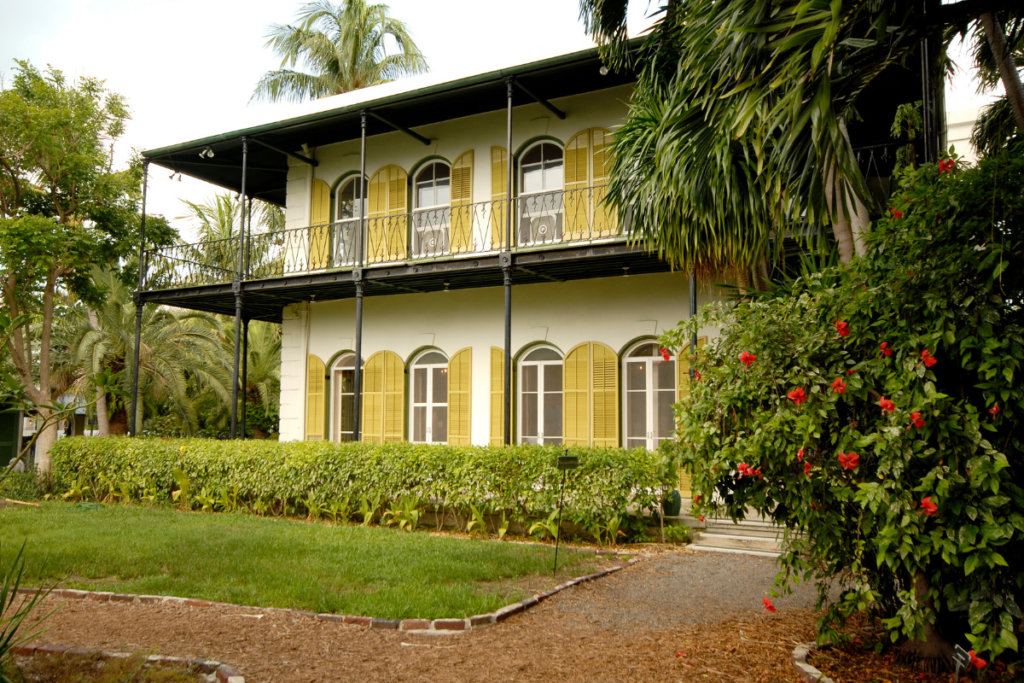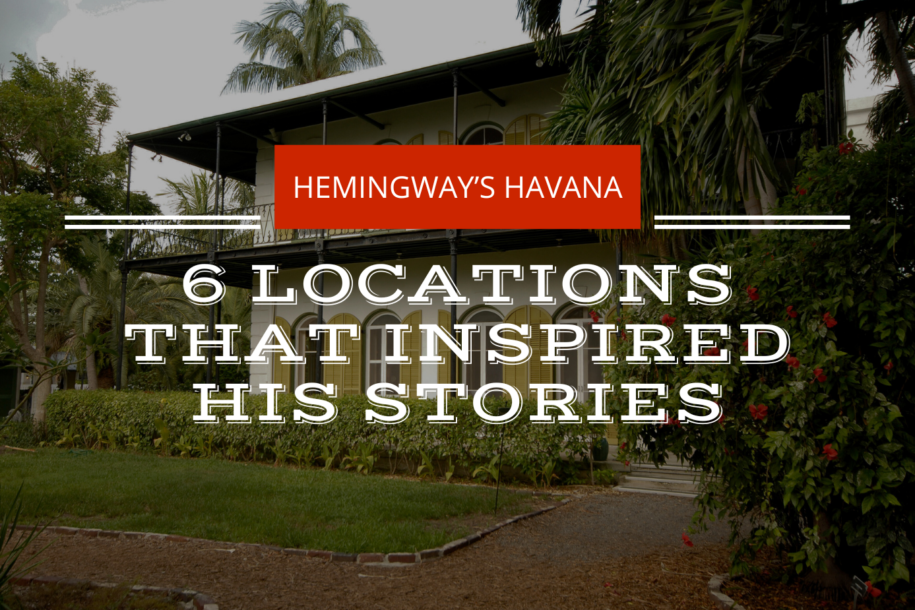Ernest Hemingway, the celebrated American writer, had a deep love affair with Cuba, calling it home for nearly two decades. The island’s intoxicating culture, vibrant streets, and surrounding waters were the backdrop to some of his most famous novels. For any Hemingway enthusiast, a visit to Havana is a journey through the pages of his life and works.
In this guide, I’ll take you through six significant locations that inspired Hemingway’s writing and fueled his legendary love for Cuba. Let’s explore Hemingway’s Havana and discover the stories that shaped his time on this fascinating island.
Table of Contents

1. La Finca Vigía: Hemingway’s Cuban Home
Located in the hills of San Francisco de Paula, just outside Havana, La Finca Vigía was Hemingway’s Cuban sanctuary from 1939 to 1960. This charming colonial-style house was the author’s refuge, where he wrote classic novels like “For Whom the Bell Tolls” and “The Old Man and the Sea.”
Today, La Finca Vigía is preserved as a museum, allowing visitors to step inside Hemingway’s world. The interior is almost untouched, showcasing Hemingway’s typewriter, books, personal belongings, and the desk where he penned countless stories. Hemingway was known for his love of hunting, and the walls are lined with mounted trophies, giving a glimpse into the author’s adventurous spirit. A walk through the gardens offers a peek at his famous fishing boat, the Pilar, which he used for deep-sea adventures. La Finca Vigía is a must-visit in Hemingway’s Havana, offering an intimate look at his daily life and inspirations.
Tip: Arrive early to avoid the crowds, and take your time to explore the grounds. While you can’t go inside the house, the open windows provide excellent views of the preserved interiors.
2. El Floridita: Hemingway’s Favorite Bar
No tour of Hemingway’s Havana is complete without a stop at El Floridita. Known as the “Cradle of the Daiquiri,” this iconic bar became one of Hemingway’s most beloved haunts. He often sat at the end of the bar, enjoying his favorite drink, a variation of the classic daiquiri with no sugar and extra rum — now famously known as the “Papa Doble.”
El Floridita’s interior maintains its 1940s charm, with deep red décor, wooden furnishings, and a bronze statue of Hemingway perched at his usual spot at the bar. The atmosphere remains lively, with live music, friendly bartenders, and a constant buzz of tourists and locals. Hemingway’s connection to El Floridita is immortalized on the walls, adorned with photos of the writer and other famous visitors. It’s a place where you can feel the spirit of Hemingway’s Havana come alive with every sip.
Tip: Order a “Papa Doble” to experience Hemingway’s favorite drink, and make sure to take a photo with his bronze statue.
3. Cojímar: The Fishing Village of “The Old Man and the Sea”
The quaint fishing village of Cojímar, located east of Havana, was a favorite fishing spot for Hemingway and served as the setting for his Pulitzer Prize-winning novella, “The Old Man and the Sea.” It’s easy to see why Cojímar captured Hemingway’s imagination; the village’s rugged coastline, azure waters, and old-world charm are reminiscent of the book’s descriptions.
In Cojímar, you can visit the monument dedicated to Hemingway, which locals erected in his honor after his death. This bronze bust, made from melted-down propellers donated by local fishermen, stands as a testament to Hemingway’s influence on the community. A visit to Cojímar is like stepping into the pages of Hemingway’s Havana, where you can stroll the same streets, dine in the restaurants he frequented, and admire the views that inspired his timeless tale.
Tip: Stop at La Terraza de Cojímar, one of Hemingway’s favorite eateries, and enjoy a seafood dish while taking in the stunning coastal views.
4. Hotel Ambos Mundos: Hemingway’s Room with a View
Nestled in the heart of Old Havana, Hotel Ambos Mundos was Hemingway’s home in the early 1930s, before he moved to La Finca Vigía. He stayed in Room 511, a corner room with a panoramic view of the city, where he began writing “For Whom the Bell Tolls.” Today, the room is preserved as a mini-museum, allowing visitors to see Hemingway’s typewriter, manuscripts, and personal items.
Hotel Ambos Mundos retains much of its original charm, with vintage furnishings, a historic elevator, and a rooftop terrace that offers stunning views of Old Havana’s colorful streets and architecture. A visit here is like stepping back in time, offering a glimpse into the writer’s creative process during his early Cuban years. Hemingway’s Havana would be incomplete without a visit to this iconic hotel.
Tip: Head to the rooftop bar for a mojito and enjoy the breathtaking sunset views of Old Havana.
5. La Bodeguita del Medio: Hemingway’s Mojito Spot
Another iconic bar tied to Hemingway’s legacy is La Bodeguita del Medio, the birthplace of the mojito. Hemingway was a frequent visitor, and his handwritten endorsement, “My mojito in La Bodeguita, My daiquiri in El Floridita,” is still proudly displayed on the wall. This small, bustling bar in Old Havana is known for its rustic décor, graffiti-covered walls, and traditional Cuban music.
La Bodeguita is famous not just for its cocktails but for its atmosphere. The lively ambiance, the smell of fresh mint, and the sounds of guitars make it a quintessential stop in Hemingway’s Havana. Even if mojitos aren’t your drink of choice, the historical significance and charm of La Bodeguita make it a must-visit.
Tip: Try the traditional Cuban food on the menu, especially the pork dishes, and enjoy the live music that often plays in the evenings.
6. Dos Hermanos Bar: A Local’s Favorite
While Dos Hermanos Bar isn’t as well-known as El Floridita or La Bodeguita, it was another one of Hemingway’s favorite hangouts. Located near the port of Havana, Dos Hermanos is less touristy, offering a more authentic Cuban experience. It’s a classic bar with vintage photos lining the walls, dark wood furnishings, and a no-frills attitude. The atmosphere is relaxed, a perfect spot for a quiet drink away from the bustling crowds of the more famous bars.
Hemingway would often visit Dos Hermanos for a cold beer after returning from his fishing trips. The bar’s close proximity to the sea made it an ideal stop for sailors and fishermen, which added to its appeal for the writer. This lesser-known location is an integral part of Hemingway’s Havana, offering a glimpse into the local side of the writer’s life.
Tip: Take a stroll along the nearby Malecón after your visit, soaking in the coastal views just as Hemingway would have done.
Frequently asked questions
What are the must-visit Hemingway-related spots in Havana?
The top Hemingway-related locations in Havana are La Finca Vigía, El Floridita, Hotel Ambos Mundos, La Bodeguita del Medio, Cojímar, and Dos Hermanos Bar. La Finca Vigía was Hemingway’s Cuban home for nearly 20 years and is now a museum showcasing his belongings and writing space. El Floridita is a historic bar where he enjoyed daiquiris, and it still serves the “Papa Doble,” his preferred version. Hotel Ambos Mundos is where he stayed in the 1930s, and Room 511 has been preserved as a mini-museum. La Bodeguita del Medio, known for its mojitos, was another favorite spot, while Cojímar is the fishing village that inspired “The Old Man and the Sea.” Lastly, Dos Hermanos Bar is a lesser-known but authentic local hangout Hemingway frequented near the port. These places are essential to understanding Hemingway’s Havana and the inspiration it provided for his stories.
Why did Hemingway love Havana so much?
Hemingway was captivated by Havana’s unique blend of culture, history, and natural beauty. The city offered an inspiring backdrop with its lively streets, friendly locals, and vibrant atmosphere. Hemingway was also a passionate fisherman, and Havana’s proximity to the Gulf Stream made it a perfect location for deep-sea fishing. The laid-back Cuban lifestyle allowed him to immerse himself in writing while enjoying the island’s music, nightlife, and cuisine. These elements, combined with the freedom he felt in Cuba, made Havana his beloved second home, contributing to the rich literary legacy known as Hemingway’s Havana.
Can you visit Hemingway’s house in Havana, La Finca Vigía?
Yes, La Finca Vigía, Hemingway’s former home, is now a museum open to the public. Visitors can tour the grounds and view the interior of the house through open windows, where Hemingway’s typewriter, personal items, and collection of books remain on display. Although you can’t go inside the house, the museum offers an authentic look into Hemingway’s life in Cuba. The gardens and his famous fishing boat, the Pilar, are accessible to visitors. A trip to La Finca Vigía is a highlight of Hemingway’s Havana, offering an intimate view of his life and creative environment.
Exploring Hemingway’s Havana
Hemingway’s time in Cuba left an indelible mark on both the island and his literature. From the lively streets of Havana to the tranquil waters of Cojímar, these six locations offer a unique window into the author’s world.
Whether you’re a literary enthusiast or simply curious about the places that shaped his stories, Hemingway’s Havana is a destination that promises to transport you to another era. So, sip a daiquiri, walk in the writer’s footsteps, and let the magic of Hemingway’s Cuba unfold before you.
